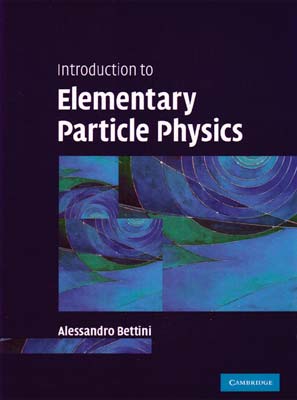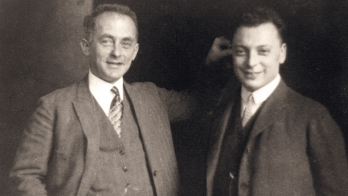By Alessandro Bettini, Cambridge University Press. Hardback ISBN 9780521880213, £35 ($70). Also available in e-book format.

I was a graduate student when the first version of Introduction to High Energy Physics by Donald H Perkins appeared; the slim one with the plain grey cover, written before the discovery of charm. This book was a welcome sight to many of us “youngsters” because it contained a wealth of concentrated information so valuable to the budding experimentalist. The book began with a nice discussion of the passage of radiation through matter in a form that was not as dated or cumbersome as the two must-read classics by Bruno Rossi and Emilio Segrè. It was also sufficiently detailed to call upon as a ready reference for an upcoming oral exam. Since then, perhaps in part because I have lived through all subsequent discoveries in particle physics, I have not been impressed with any of the rather few particle-physics texts that have appeared; not, at least, until the publication of Alessandro Bettini’s Introduction to Elementary Particle Physics. Like Perkins before him, Bettini’s expertise as a careful, methodical and experienced experimentalist shines brightly throughout the text. The reader is never left in any doubt that physics is an experimental science.
The choice of topics and the level of detail are excellent and the explanations are clear. The book is rich in physics content, especially its emphasis of important concepts, including relativistic kinematics, the wave nature of particles and quantization of fields. Some of my favourite examples are determination of the spin and parity of the pion and why this is important, the Lamb shift in quantum electrodynamics and the discussion of αs and the proton mass. The author is an expert in neutrino physics and this comes through in the material clearly. He does a good job of emphasizing the physics at an appropriate level without getting absorbed in the mathematics of Feynman diagrams, which belongs in a course on field theory. The text is sprinkled with a few historic gems, such as the story of Marty Block asking Dick Feynman who asked C-N Yang at the 1956 Rochester conference: “Is it possible to think that parity is not conserved?” The book is extremely well written, topically informative and easy to read – but best of all it is full of physics.
Bettini’s text is suited for a one-semester introductory course in particle physics; the one I have taught at Boston University is attended by a mixture of beginning graduate students and advanced undergraduates. The text (431 pages) is organized into 10 chapters, which can be easily covered in 16 weeks. Each chapter contains a number of accessible and readable references, as well as a generous number of end-of-chapter problems. A complete instructors’ solution manual is also available in electronic form.
After this well deserved praise, do I have any complaints? Sure, but they are relatively minor: the use of dashed lines instead of wavy lines for W and Z propagators; time not going “up” in Feynman diagrams; and &Lamda;QCD written unconventionally as &lamda;QCD. I would personally have introduced several aspects of the weak interaction much earlier, such as parity violation in beta decay, helicity in pion decay, and the discovery of the τ. I would also have covered deep-inelastic scattering before QCD and included more details on hadron jets, but these are largely personal choices. I was somewhat disappointed that a large number of complete solutions to end-of-chapter problems are available in the text, limiting what I could assign from the book as homework. The bottom line, however, is that as a particle physicist I enjoyed Bettini’s book three times – not unlike a fine wine: the first time when admiring its contents; the second when reading it; and a third time when teaching from it. Bravo, Sandro!








